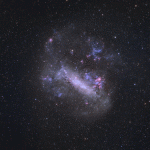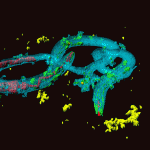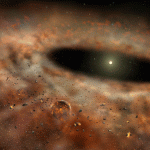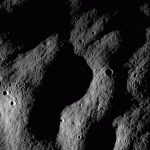
Artists rendition of a CubeSat orbiting Earth. Image: NASA/ Montana State University
UNSW researchers have developed a new system design for a nano-satellite, which could lead the way into a sustainable Australian space program.
The 6U CubeSat low Cost Space Mission workshop, arranged by the Australian Centre for Space Engineering Research (ACSER), was held in Canberra on the 17-18 July. The speakers, which included John Hines from the NASA-Ames Research Centre (ARC), explored the key features of an innovative nano-satellite, called 6U CubeSat, which was developed for educational purposes in the US and modified by researchers at UNSW.
Weighing only 8 kg and the size of a shoebox, the 6U CubeSat is ten times smaller than existing micro-satellites. “This size reduction should make producing the satellite ten times cheaper — around $1 million instead of $10 million,” explained Steven Tsitas at the workshop. “The 6U CubeSat can do some of the Earth-observing missions that existing 100 kg satellites do, such as agricultural monitoring and night imaging.”
A major problem with the larger satellites currently on the market is that they are so expensive that the technology used in them has to be quite conservative. But if cheaper nano-satellites start being used for some of the missions, more funding and research can go into developing advanced technologies housed inside the spacecrafts.
The development of this innovative system design for the 6U CubeSat by UNSW researchers puts Australia in an exciting position. Being one of the only developed countries that delayed having a national space program, it is now difficult to compete with the technologies developed by existing international space groups.
However, the nano-satellite market — which includes spacecrafts that weigh between 8 kg and 40 kg — is virtually an untapped niche. So by designing and manufacturing satellites in this range, such as the 6U Cubesat, Australia would not have to compete in the international space research market, but instead provide the complimentary resources.
The economic opportunities for Australia include export income from selling the satellites to international groups. Tsitas explained that Australia’s position should be similar to that of Canada in space research. Canada provided the high-tech robotic arm (named Canadarm) used on the US Space Shuttle, and if Australia can also begin to develop and export niche space products, he thinks international strategic relations could be forged.
Another advantage of developing a sustainable space program in Australia is that it will inspire the next generation of space researchers. Thinking about the universe fascinates all curious minds and for a child or young adult in school to know that when they grow up they could build spacecrafts right here in Australia, it could encourage them to try hard in their studies.
Source: Space Daily






